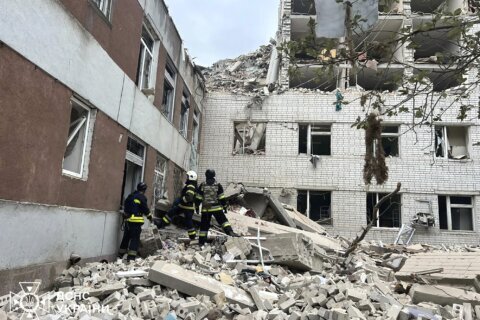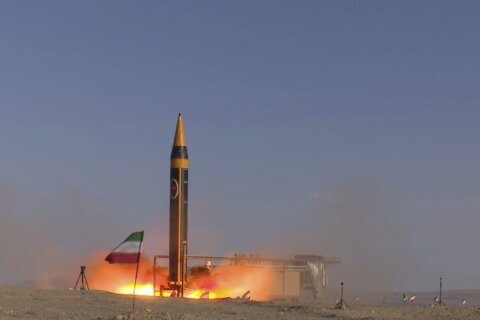BANGOR, Wash. – A large number of the USS Maine crew was gathered in the submarine’s mess area about 11 a.m. on July 29. It was lunch time for them, but before they sat down to eat, Fernandez, a Jr. Grade officer, filled his lungs with air and belted out as loudly as he could upon request:
“USS Maine!”
Equally as loud, the crew responded:
“Big stick!”
Fernandez did it twice more and the crew responded in kind.
That was the sub’s signature call. It was inspired by President Teddy Roosevelt, who once said “Speak softly and carry a big stick, and you will go far.”
With 24 Trident II, D-5 missiles on board, a quiet propulsion system that seems to make less noise than a pin dropping and vast swaths of the Pacific Ocean to roam, the USS Maine embodies Roosevelt’s axiom perfectly.
But down below deck, inside an airtight vessel, where does the air come from that filled Fernandez’s lungs?
In 2009, during a week-long visit aboard the USS Miami, Los Angeles Class submarine, Dennis Boyer, the prospective Commander of the vessel said, “we make air as good as God does.”
Boyer explained, “We take seawater, we’ll boil it off and make freshwater, and then we use electrolysis to split the hydrogen from the oxygen and we store the oxygen for later use. ”
On Aug. 4, the Maine slipped out of the Hood Canal, into the surrounding waters and through the Strait of Juan de Fuca. Thanks to advanced acoustic quieting technology, it dropped into the recesses of the Pacific Ocean to patrol quietly until it’s needed.
The fact that they could be down there for months inspired the question; how do they continuously produce enough air to fill their needs?
During our visit with the Maine crew, a machinist mate working in the auxiliary room explained that after the freshwater is made and stored, “then we send 1,050 AMPs [of electricity] through that water and split the hydrogen and oxygen molecules. Once they’re split, we send the hydrogen overboard and the bubbles break up behind the ship and we store the oxygen in the banks that are stored in our big, main ballast tanks.”
He also explained that those hydrogen bubbles pushed out the back of the vessel help keep it quiet.
If the submarine became disabled and couldn’t produce any more air, he says, the “oxygen in those ballast tanks have enough to provide 150 men breathing one standard cubic feet an hour for five days.”
But that’s not their only source of air.
“We also have oxygen candles, all we pretty much do is ignite them, and we have 600 candles on board, which is enough for 19 days, so all together, if we couldn’t make any more oxygen, we have enough oxygen for 24 days,” the machinist mate says.
The USS Maine’s whereabouts since leaving its port in August are unknown, the gold crew is expected to be out for 70-90 days, before returning and the blue crew is deployed.
Related Story:
- Pacific Predator Part 1: ‘Even our bosses don’t know exactly where we are’
- Pacific Predator Part 2: The No. 1 mission
Editor’s note: This story is part of an eight-part series on the USS Maine submarine. WTOP’s J.J. Green visited the crew of the USS Maine in late July in the Seattle, Wa., area.
Follow @WTOP on Twitter.







